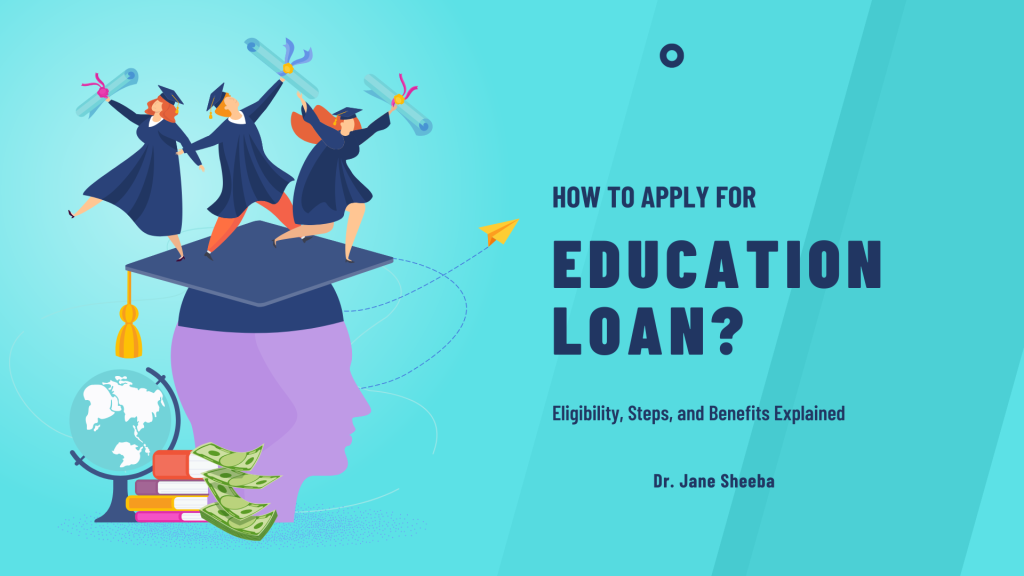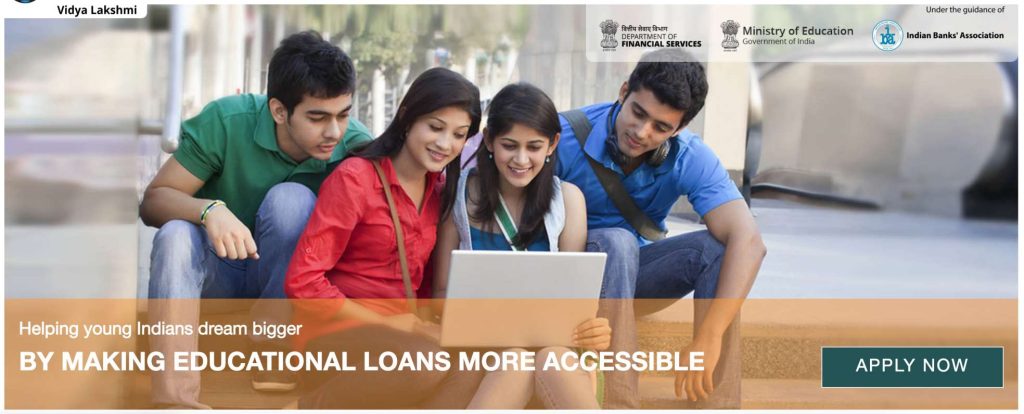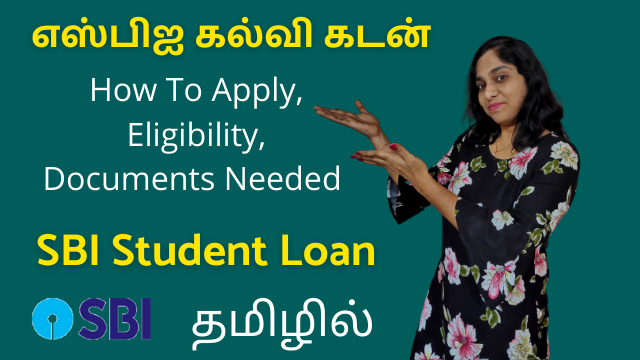
Pursuing higher education is a significant milestone in anyone’s life, but the associated costs can be daunting. From tuition fees to living expenses, the financial burden can often be overwhelming. Fortunately, education loans are a great way to finance your academic aspirations without straining your family’s savings. In this comprehensive guide, I’ll cover everything you need to know about education loans in India, including eligibility, benefits, and how to apply.
What Is an Education Loan?
An education loan is a financial aid offered by banks and financial institutions to help students cover the costs of their higher education. These loans typically cover tuition fees, examination fees, travel expenses, and sometimes even living costs, depending on the loan terms. They are available for studies in India and abroad, making them versatile for students with different aspirations.
Before applying for an education loan, it’s essential to understand whether you meet the eligibility requirements. Although criteria can vary between banks, the general requirements include:
- Indian Citizenship: The applicant must be an Indian citizen.
- Admission Confirmation: A confirmed admission into a recognized institution is mandatory. This can be for undergraduate, postgraduate, or professional courses.
- Age Limits: Applicants are generally required to be between 18 and 35 years old.
- Academic Performance: Banks often consider the academic records of the student as an indication of their potential to complete the course.
- Co-applicant: A co-applicant (parent, guardian, or spouse) with a steady income is usually required to guarantee the loan.
What Expenses Does an Education Loan Cover?
Education loans are not just limited to tuition fees. They can also cover:
- Examination and library fees.
- Purchase of study materials, including books and laptops.
- Travel expenses for international studies.
- Accommodation and living expenses.
- Laboratory and other institutional charges.
Banks may have slightly different inclusions, so it’s advisable to check with your lender.
Benefits of Education Loans
Education loans offer several advantages, making them an attractive option for students:
1. Financial Independence
An education loan enables students to finance their education independently, reducing reliance on family savings.
2. Tax Benefits
Under Section 80E of the Income Tax Act, you can claim deductions on the interest paid on your education loan for up to 8 years.
3. Flexible Repayment Options
Education loans come with a moratorium period, usually lasting until six months to one year after the completion of the course. This means you don’t have to start repaying immediately.
4. Competitive Interest Rates
Government schemes like the Vidya Lakshmi Portal ensure lower interest rates for meritorious and underprivileged students.
How to Apply for an Education Loan in India
Applying for an education loan involves several steps. Here’s a detailed breakdown of the process:
1. Research and Compare Loan Options
Start by researching different banks and financial institutions. Compare their loan terms, interest rates, and repayment options. Public sector banks often offer loans with favorable terms under government-backed schemes.
2. Check Eligibility
Once you have shortlisted a few banks, ensure you meet their eligibility requirements. Pay close attention to the minimum qualifying criteria for income, co-applicant, and academic performance.
3. Gather Necessary Documents
The following documents are generally required to apply for an education loan:
- Admission letter from the institution.
- Mark sheets and certificates.
- ID proof and address proof of the applicant and co-applicant.
- Income proof of the co-applicant.
- Statement of estimated expenses provided by the institution.
- Passport (for international studies).
4. Submit the Loan Application
Visit the bank’s branch or their official website to fill out the application form. Ensure you provide accurate information and attach all the required documents.
5. Loan Sanctioning Process
Once your application is submitted, the bank will verify your documents and assess your creditworthiness. They may also conduct an interview to understand your repayment capacity and the scope of your chosen course.
6. Loan Disbursement
Upon approval, the bank will issue a sanction letter. The funds are usually disbursed directly to the institution in installments, based on the fee structure.
Repayment Terms for Education Loans
Repayment typically begins after the moratorium period. Most banks offer flexible repayment terms, with tenures ranging from 5 to 15 years.
- EMI Options: Monthly payments based on the principal and interest.
- Prepayment Facility: Many banks allow you to prepay the loan without penalties.
Government Schemes for Education Loans
The Government of India provides several schemes to make education loans accessible:
1. Vidya Lakshmi Portal

The Vidya Lakshmi Portal is a government-backed initiative in India that provides a centralized platform for students to access education loan information and apply for loans seamlessly. Managed by NSDL e-Governance Infrastructure Limited, the portal connects students with multiple banks offering education loans under various schemes, including the Indian Government’s Interest Subsidy Schemes. It simplifies the loan application process by allowing students to apply to multiple banks with a single form, track application status, and gain insights into loan terms and eligibility criteria.
The Vidya Lakshmi Portal ensures transparency, accessibility, and convenience, making higher education financing more straightforward for Indian students.
2. Central Sector Interest Subsidy Scheme (CSIS)
The Central Sector Interest Subsidy Scheme (CSIS) and Credit Guarantee Fund Scheme for Education Loan (CGFSEL), implemented by the Department of Higher Education, Ministry of Education, aim to support students from economically weaker sections in pursuing higher education. Under the CSIS scheme, interest subsidies are provided during the moratorium period (course duration plus one year) on education loans taken from scheduled banks under the Indian Banks Association’s Model Education Loan Scheme.
Students with annual parental incomes up to ₹4.5 lakhs are eligible, and the scheme applies to professional and technical courses from NAAC-accredited institutions, NBA-accredited programs, or Institutions of National Importance. Canara Bank serves as the nodal bank for implementing the scheme, ensuring interest subsidies are directly credited to students’ loan accounts via the DBT mode through the PFMS gateway. The scheme now includes loans up to ₹10 lakhs, enhancing its reach and benefits for deserving students. For more details, visit the Canara Bank portal or explore relevant educational loan platforms.
3. Dr. Ambedkar Central Sector Scheme
The Dr. Ambedkar Central Sector Scheme of Interest Subsidy on Educational Loans for Overseas Studies for OBCs and EBCs, implemented by the Ministry of Social Justice and Empowerment, supports students from Other Backward Classes (OBC) and Economically Backward Classes (EBC) in pursuing higher education abroad. The scheme provides interest subsidy during the moratorium period, which includes the course duration plus six months to one year. It is applicable for loans taken under the Indian Banks Association’s Model Educational Loan Scheme for studying at Master’s, M.Phil., and Ph.D. levels in specified disciplines.
To qualify, the annual family income must not exceed ₹8 lakh for OBC candidates and ₹2.5 lakh for EBC candidates. By covering interest costs during the initial period, the scheme ensures that talented students from economically weaker backgrounds can access quality education abroad without undue financial strain. For further details, visit the Ministry’s official website.
Tips for a Successful Loan Application
1. Maintain a Good Credit Score
A good credit score of the co-applicant improves your chances of approval.
2. Choose the Right Loan Amount
Apply for an amount that aligns with your actual expenses to avoid financial strain.
3. Plan for Repayment
Ensure you have a repayment plan in place based on your expected income post-education.
Conclusion
An education loan can be the stepping stone to achieving your academic and professional dreams. By understanding the eligibility criteria, benefits, and application process, you can make an informed decision and unlock opportunities for a brighter future. Take advantage of the available schemes and invest in your education confidently!







Leave a Reply